2024 Camino Portugues

Linda has this desire to stitch together all loose ends of our previous trips. One of these loose ends was Lisbon and the goal for 2024 was to cycle back home via the Camino Portugues (Lisbon to Santiago de Compostela), The Camino del Norte (Compostela to San Sebastian) and the rest via France, all depending how much time we still had available.
The first challenge was "How to get to Lisbon" with all the luggage and the bikes. Turned out that (as usual), taking a flight was the most practical, the fastest and the least expensive. Any other (more sustainable) way of travel would take us 2 to 3 days instead of 5 hours, would create so much more hassle and also would cost us minimum 3 times of what we had to pay now.
We packed our bicycles at home in used carton bicycle boxes which we reduced to the maximum allowed size for airflights from Brussels (H+W+D = max 280cm). Arriving in Lisbon, we took a big taxi to our hostel so that we could also unpack and reassemble the bicycles at ease.
We retrieved the GPS tracks from the internet by searching for the "Camino Portugues". There are 2 versions, the Inland version and the version following the coast line.
We followed the inland track between Lisbon and Porto and than switched to to coastal version to the Spanish border. For our route, click the button on the left.
Lisbon

The tram network in Lisbon dates back to 1873, converting to electric trams in 1901. Many lines are still serviced by trams from the 1930s and 1940's and if it's your first time in Lisbon, just take tramline 28 which passes through most of Lisbon's historic neighbourhoods.

Most of the small-scale and affordable hostels are in old townhouses and do not really have facilities for storing your bicycles.
Here we were lucky. We found the perfect spot on the 2nd floor patio. Oh yes, it was also via a spiral staircase.
Absolutely no problem for us.
Lesson learned for the rest of the trip: Best to book after you have checked out the storage facilities.
This was certainly not our first time in Lisbon so we only stayed 1 day to get our bikes ready for the trip, do some last shopping of things we did not bring or forgot to bring with us from Belgium. Gas canisters for our gasburner, some food items and a waterbottle for Dirk (His bottle probaby still on the dining table at home).
By luck, Linda discovered a nice healthy food restaurant not far away from our hostel.
For those who prefer vegetarian food, remember that this will be difficult to find if you are on a trip in Portugal. Even in the bigger cities, it's a challenge.
Better enjoy it while you can.
Mangerica
Rua João das Regras
Praça da Figuera
Lisbon
Their Instagram
Their Facebook



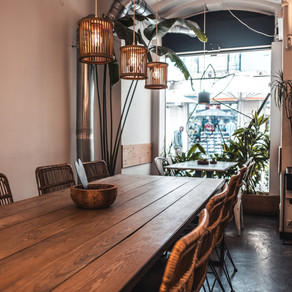

Our standard routine for the next couple of weeks.
1) Take all bags outside
2) Dirk gets the bikes 1 by 1 while Linda keeps the watch
3) Load
4) Morning picture
5) GPS and tracker on
6) Go


Lisbon - Coïmbra


The first 15 km leaving Lisbon, we're cycling alongside the Rio Tejo (Tagus river) and we're on the hiking/cycling route to Santiago de Compostella and the other well known pelgrimage route to Fatima.

It's immediately clear to us that while we have downloaded the track for cyclists, most of the Camino will be on the same path as the one for the hikers, this means offroad cycling. Just great.




First day of cycling goes like a breeze, 96 km to Santarem. We also discover that on the Camino, there are not a lot of campsites. Hostels and small hotels on the other side are not at all expensive.

Day 2 brings our first technical challenge. When cycling through loose sand, Dirk looses balance, cannot unclip from the pedals and falls. Nothing hurts but after awhile, he notices that his front brake is starting to loose oil at the brake lever.

There is one bicycle shop in the next village, Entroncamento. In fact, it's a repair shop in a small garage behind a townhouse and it's closed for lunch. We decide to wait and when the shop opens again, we're at first a little concerned as our Hope brakes are not widely used in Portugal. Fernando immediately puts us at ease as he knows everything about our Hope brakes, has the right type of brake oil and fixes it all professionally in just 30 minutes.
Oh yes, he also puts on a record of ABBA.



We still manage to cycle 64 km and stop in Tomar, a historic town and a former strongholld of the Knights Templar, a medieval Christian military order.



The next day, it's 85 km to Coïmbra where we will stay for 2 nights. While we certainly see pilgrims on the Camino, this is certainly offering a more tranquil experience than what we were expecting.




Coïmbra


Coïmbra is home to one of the most prestigious universities in Portugal. The university of Coimbra was founded in 1290 and is a UNESCO World Heritage site. The historic center is filled with narrow winding streets, old buildings and charming squares.

As usual, we only decide where we will stay for the night when we can check out the place. Cycling up towards the old town, we noticed a hostel next to the cathedral where some other cyclists were checking in. Obviously, they had a storage facility for bikes. The Serenata Hostel was first a maternity institute and later on the music conservatory of Coimbra.



The morning after we arrived, walking outside looking for a breakfast place, we were so surprised that most of the streets and public places were now covered with intricate and colorful flower carpets for the "Tapetes de Flores" event. This all happened while we were sleeping and it's a part of the Festa das Cruzes, a traditional Portuguese celebration.

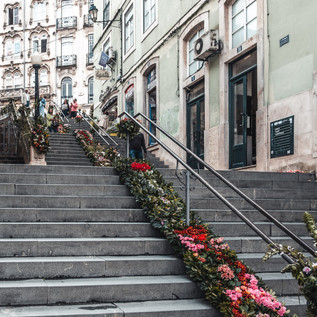
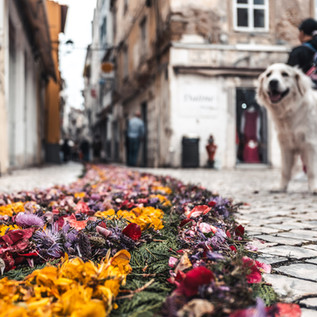
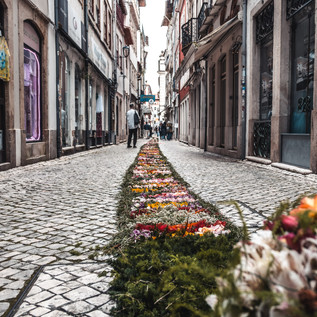

The Festa das Cruzes often coincides with traditional markets where the locals in traditional clothing are selling local crafts and homemade pastries, bread, etc..
The women are wearing the Traje de Laveira, a coulorfull skirt, embroidered blouse, apron and headscarf.
The men's attire is the Traje de Campino, which is a waistcoat and of course a wide-brimmed hat.

Just around the corner of the cathedral is the national museum with nice views of the city from the courtyard.

On the same day, students also celebrated "Queima das Fital", or the "Burning of the Ribbons" which marks the end of the academic year in Coïmbra.
All students are dressed in a black suit or cloak. The colour of the ribbons represents their faculty or field of study.


Tip for a vegetarian meal : Fangas Veg in Rua de Fernandes Thomas 45-49



Bye Bye Coïmbra

Coïmbra to Porto

133 km to Porto, to much for 1 day so we try to find a place to stop somewhere in the middle. We'll give Branca a try at 73 km, leaving a shorter ride tomorrow to Porto.


We usually have at least 3 pieces of fruit with us for the hungry moments during the day, one of them always a banana.

Another daily ritual when passing a bakery or cafe sometime before noon.
(Just 1, leaving room for another one in the afternoon).




The Camino Portugues is really very well signposted. Every turn or split, there is a sign. As all the signs are for the hikers, we were checking our map on PocketEarth mainly for the types of underground and elevation, allowing us to take an alternative road if necessary.


When cycling in the Portugal countrysite, you still see a lot of ancient Lavadouros which are still in use by the locals.

And on a totally different subject, if you really want to know how Linda's shoes got this dirty, watch the video.
Porto


We arrived in Porto via the Dom Luis I Bridge, designed by a student of Gustav Eiffel.
The bridge over the Douro river connects Porto and Vila Nova de Gaïa with it's numerous Port wine cellars.
Porto is the second largest city in Portugal after Lisbon.
It's history dates back to Roman times when it was known as Portus Cale, a name that eventually led to the name Portugal.

The Säo Bento Railway station is known for it's stunning azulejos, traditional blue and white tiles, depicting historical scenes.


You can't go wrong when strolling around in Porto. The historic center with its narrow cobbled streets and medieval architecture is also a UNESCO World heritage site.





We stayed in the Republica Hostel at the Praça de Republica, just outside the historical center. Bikes were safely parked in the courtyard at the back of the hostel. The building dates back to 1883 and hosted the former municipal archives.





Tip for lunch or dinner: Es-pé-ci-e in the Rua da Picaria 84
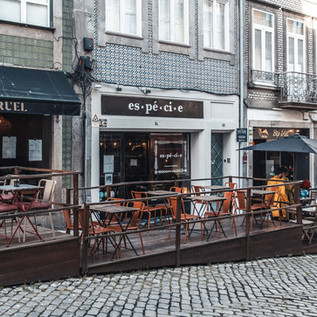
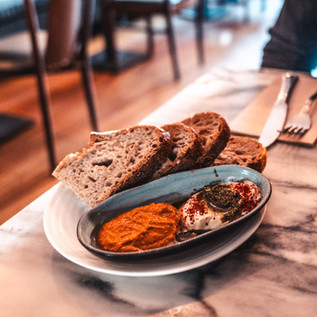
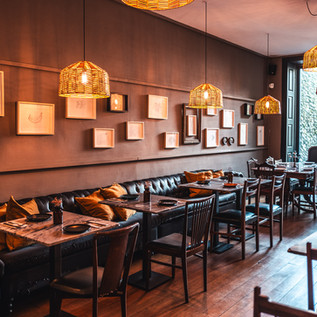
Tip for breakfast: I Love Nicolau at Largo Alberto Pimentel 4

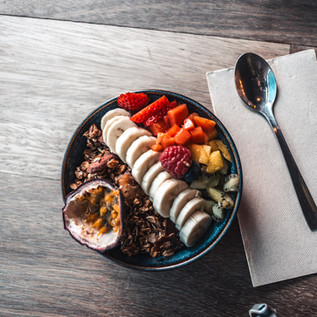

After rolling down the cobbled streets down to the Douro river, we're ready for the last 270 km to Compostela.

Porto - Santiago de Compostella

The last 110 km on Portuguese soil will all be along the coast. In Caminha, we will take a ferry to A Guarda on the other side of the Rio Minho / Rio Miño, which forms the entire northern border between Portugal and Spain. We then keep on following the coastline for 60 km till Vigo where Dirk ordered spare brakepads for our bikes.




Along this part of the Camino Portugues, the signposted route is a lot on boardwalks. Some of them in perfect condition, others under renovation and others not allowed for cyclists.
On our PocketEarth map on the iPhone, we could easily find alternative roads or paths to the next village bringing us back on track.


About 7 km after Esposende, the Camino path, like so many other times, changed into a forest path. This time, it started becoming smaller, steeper, covered with tree roots and rocks, slippery, etc..
Looking at the topographic map, it was clear that it would be much better and safer to turn around and take an alternative route. Don't worry, this part has been taken out of our GPS track.




Something about tire pressure: Living in Belgium, we always thought that cycling on cobbled stones was something typical for flanders. We now know, it can get a lot worse.
Whenever the Camino was guiding us via the small villages and rural areas, we were often on small cobbled roads, some of them in really bad condition.


Ideally, you should be able to adjust the tire pressure depending the type of road your riding on.
Cobbled roads, less pressure to provide more comfort and suspension.
Forest roads with obstacles, medium pressure to avoid pinch flats.
Smooth road, higher pressure to reduce rolling resistance.
All nice, but if you just carry a mini handpump, it's not likely that you make these adjustments or even bother to check your pressure on a daily basis.
For our next trip, we bought a battery operated mini pump. Let's see if it will change our behaviour.

Lunch time : We usually have a picnic for lunch and we buy our stuff in the first supermarket we are passing in the morning. We stick to a baguette or breadrolls with some cheese or veggie spread, tomatoes, radish, etc..
On colder days, we might even just have a chocolate bar on our bread.
On warmer days, we just eat bread with the real Belgian Lotus Speculoos.

Approaching the Spanish border with a view on the Santa Tegra mountain in Spain, we're just wondering at what time the ferry goes.


All wishful thinking. The big ferry stopt operation some time ago and the crossing is now done by small boats. You need to take all bags from the bike, tilt the bikes aside the gates onto a closed off ponton to get to the smaller boat.
The smaller boat can take 8 persons and we were already with 12, no problem says the skipper.
Only issue is the low tide and the windforce of 14 knots. He still wants to wait as he needs to figure out where we can safely board.
Change of plans : We decide not to take the risk of losing a bag or bike. Alternative is to cycle to the next bridge crossing the river, 30 km further down inland.


We're lucky again, the entire 30 km is on a smooth cycle path, the Minho Ecovia, upto Valenca where we book a hotel. The hotel is just next to the old fortress and also on the Inland Camino route.
Unfortunately, we need to go back to the coast as we need to pick up the spare brake pads in Vigo.



The camino goes through the fortress to the Ponte Velha Internacional over the Minho river.
The steel bridge dates back to 1884 and has 2 decks, the upper deck for trains and a lower deck for other traffic.


The biggest change between Portugal and Spain: No Pasteis de Nata anymore for our morning break, so we have to try out something else.




As from Porto, we saw an increase of hiking pilgrims and now in Spain, there seem to be even more.
We've been told that certainly in Spain, there are many who have limited time and want to get a taste of hiking by doing a 5 to 7 day walk or the last 100 km's to Santiago.
For this, the Camino is indeed a good choice.





Santiago de Compostela

When you arrive in Santiago, you immediately feel the vibe changing. Everyone walks or cycles in to the direction of the Praza do Obradoiro. You only see people in outdoor clothing, many carrying a backpack. Everyone has a smile on their face because they have reached their goal. People congratulate each other. All happy after having walked or cycled 100's or 1000's of kilometers.
Some just sit quietly on the ground reflecting on the trip, others are video chatting on the phone, bringing the good news they've arrived.



Tip for lunch: Marie Miner at Rúa do Franco 50
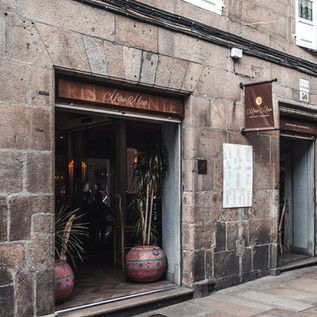

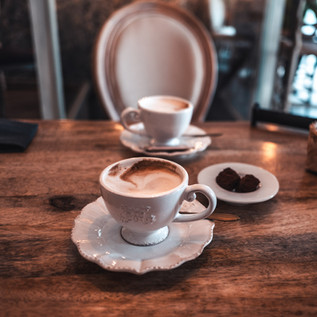
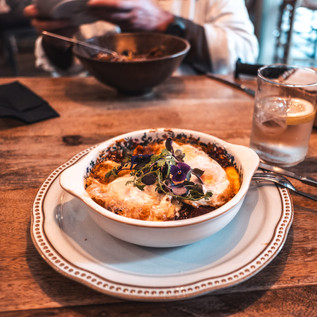
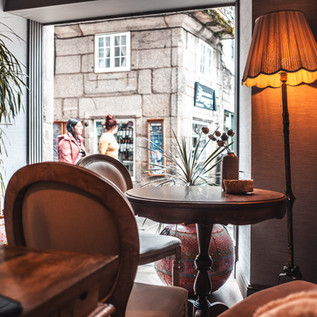

Tip for dinner : Any tapas place where there is a crowd and where you like what you see.


This route was the 1st part of our 2024 cycle trip from Lisbon back home.
For having a look at part 2 "Camino del Norte" or part 3 "Hendaye to Halle", go to the menu under Related

